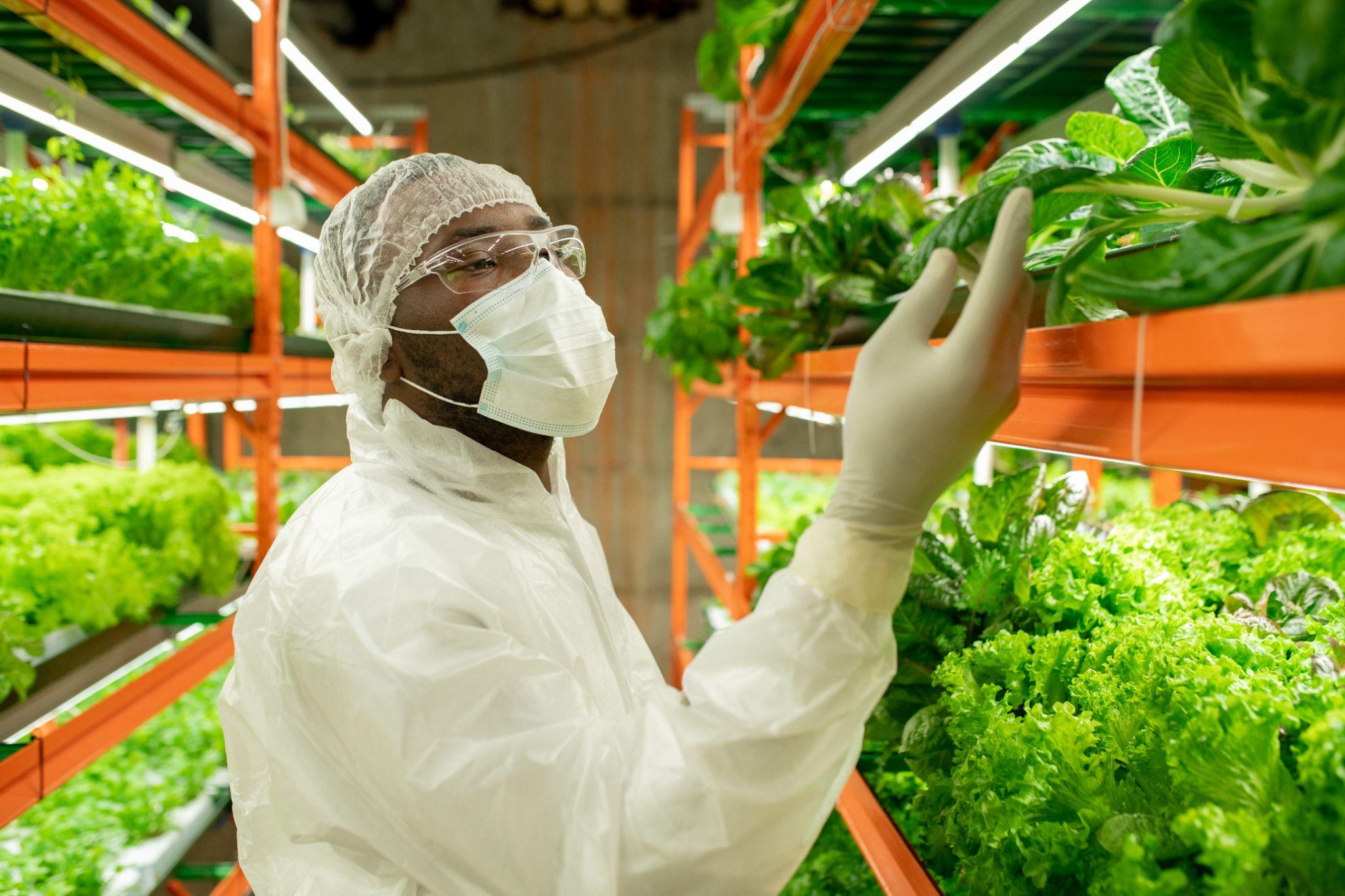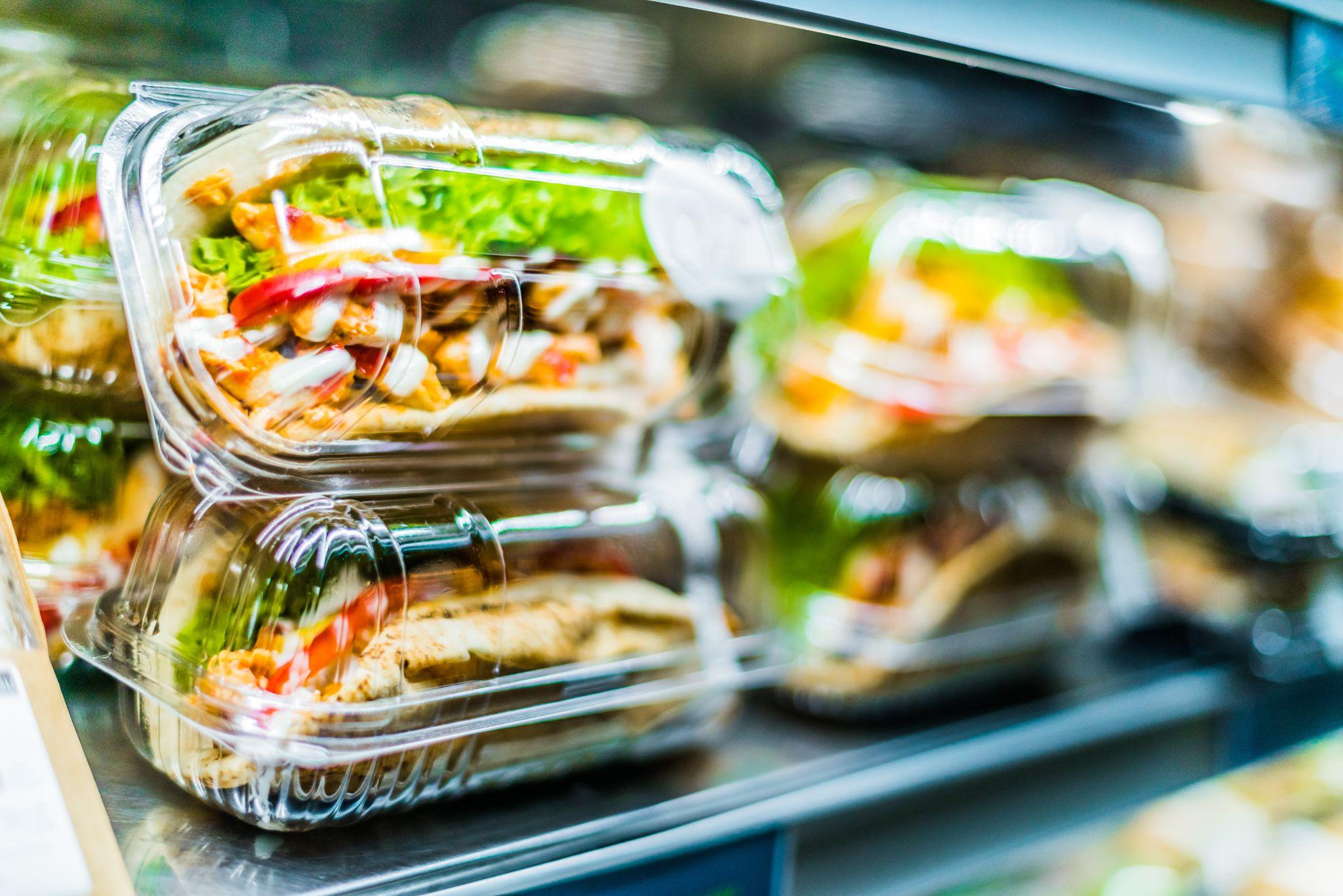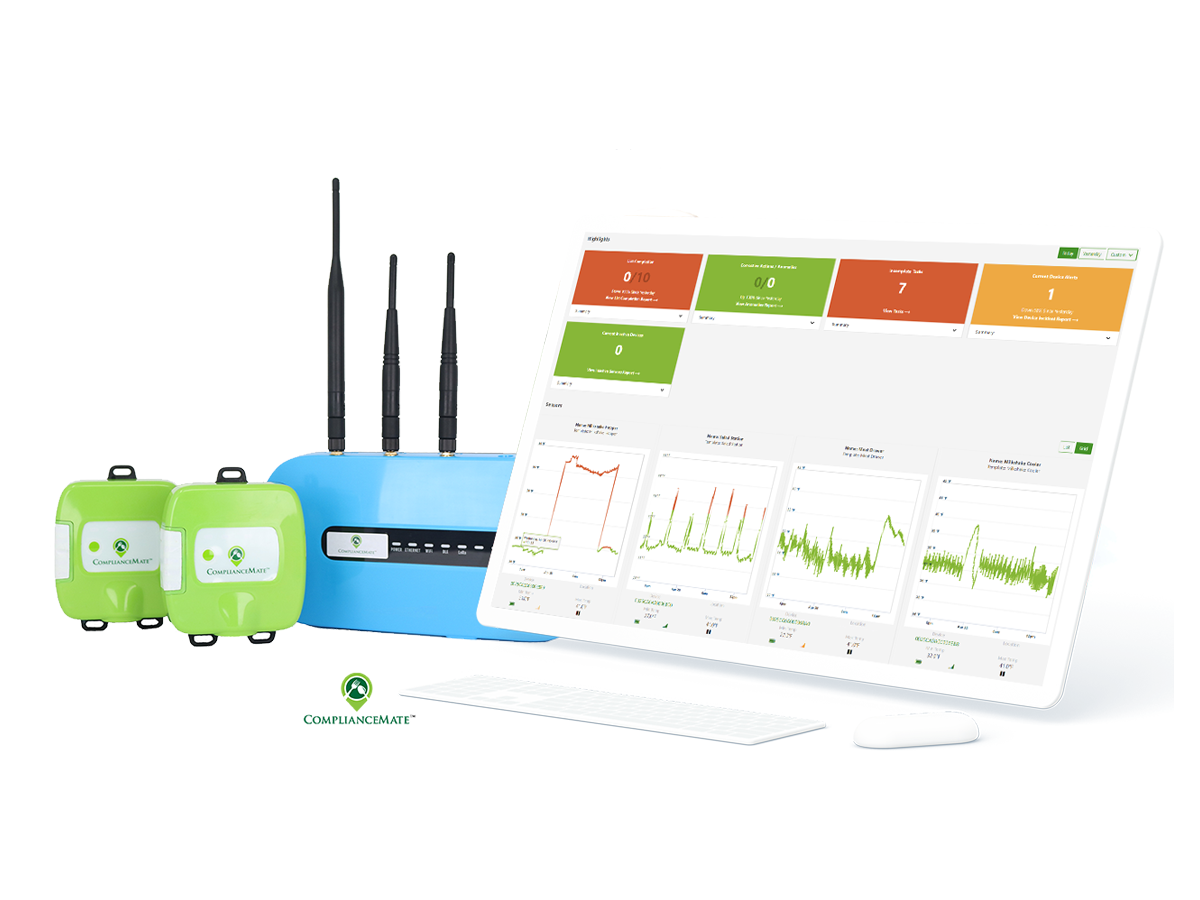
Food safety assurance through proper handling practices and temperature monitoring is more important than ever, which is something underscored by the new food traceability rule from the FDA announced in March 2023.
Technological advancements like digital checklists, wireless temperature monitoring, automated alerts, and automatic temperature logging will continue to assist businesses throughout the foodservice industry, providing increased safety, efficiency, and the realization of better ROIs.
Here are our predictions for food safety monitoring technology in 2024.
Expansion of Food Safety Monitoring Across Industries
Thanks to technology, food safety monitoring across industries beyond restaurants will continue to grow exponentially in the coming year.
Medical Industry and Cafeterias
There has been a rise in the use of automated monitoring in pharmaceutical medications in storage and the advancements in this technology will continue to make it even easier to do so in more clinical settings. Temperature-sensitive products like medical solutions can be monitored remotely from any device, saving time and personnel while assuring product safety.
To assist – big data is the rapid gathering of data from a variety of sources in large volumes. Where product safety is concerned, this data can be collected from sources like wireless sensors and handheld devices and transmitted instantly to databases, where any assortment of collected data can be extracted and analyzed for timely decision-making.
Medical cafeteria environments are and will be able to minimize the potential for foodborne illness and product loss with big data. This is already possible through wireless sensors that provide continuous temperature monitoring and automated alerts, providing for the opportunity to avoid equipment failure and manage power outages.
Recreational and medical marijuana businesses require a way to carefully monitor plants in terms of temperature and humidity. Digital monitoring solutions using big data allow for this, so that factors that can inhibit growth and potency can be managed, and potential problems identified and corrective actions taken to ensure plant health.
Education and Corporate Cafeteria Environments
School and corporate cafeterias must be able to meet several types of challenges on a daily basis, including overall hygiene, HACCP compliance, health department requirements, as well as preparing for unplanned inspections. It is always the goal to achieve proper control over food safety temperatures of all products being stored and served at all times. Additionally, the impact of food allergies, cultural requirements, and overall food safety in cafeterias has and will continue to be paramount.
Case Study
The implementation and outcomes of enhanced food safety measures in an educational setting was documented in a case study involving Baltimore city schools.
Due to inadequate thermometers installed in the cafeteria refrigerators at the schools, the organization was relying on manual temperature logging, a time-consuming and error-prone method that greatly increased the risk of compromised food safety.
Public schools partnered with a university whose faculty had already implemented and were using ComplianceMate’s wireless food temperature monitoring system. The result was so successful that the system was implemented at three public schools for testing.
Soon after, this implementation would prove its value. A major storm downed power lines, knocking out power to two of the three schools testing the ComplianceMate system. Temperatures continued to be monitored by the wireless sensors, revealing a dangerous rise in temperatures that wouldn’t have been detected otherwise. Alerts were sent to the appropriate staff and disaster was a potential food loss disaster was averted.
Corporate Dining
Corporate dining environments are largely self-serve, self-checkout scenarios, where personnel move through these areas, choosing from an array of pre-portioned hot and cold food items. Using manual methods of temperature data collection and logging can leave what are typically unmanned environments vulnerable to compliance violations and to the high risk of foodborne illness.
Technology has revolutionized these automated dining areas and is poised to continue improving them. Discreetly placed probes or sensors quietly monitor food safety temperatures throughout the business day and through the night. Again, alerts are sent in the event of temperature fluctuations outside of set parameters to assist in quick corrective actions.
Innovations in food packaging can also preserve the quality of food in cafeterias, communicating nutritional content while also slowing the chemical and biological process that can negatively affect food safety and quality.
Travel-Oriented Food Locations and Convenience Stores

Technology’s role in improving the safety and quality of food has also had a significant impact on the travel industry and convenience store operations, where patrons can enjoy fresh foods that are prepared on-site and ready to go.
However, before this can occur, there must be a way to monitor the areas for food preparation and service areas at all points in the process. Sensors that measure not only temperature but humidity and pH can be installed in refrigeration, freezing, and storage areas in warehouses, trucks, trains, ships, and planes to ensure complete compliance.
The Internet of Things (IoT) makes collected data accessible by a network of devices across all food transportation and storage and serving areas. It aggregates and integrates collected data, eliminating duplicate information for continuous efficiency. It provides access to the data from anywhere at any time and gives a deeper insight into the efficiency of the operations. The data provides valuable information on trends, concerns and efficiencies assisting in optimizing operations.
Preparation for Food Traceability Initiative
The FDA’s Food Traceability Final Rule will require businesses that hold, pack, process, and manufacture food to adhere to a new set of rules to track and trace certain foods like fresh vegetables and fruit, cheeses, seafood products, and shell eggs.
These rules aim to make it easier for food businesses to identify potential contamination more quickly than the current rules allow. They require businesses to maintain records with Key Data Elements (KDEs) that have been associated with Critical Tracking Events (CTEs).
The providing of information to the FDA and sharing of that information with all entities in their individual supply chains will also be required.The deadline for businesses to comply with these new rules is January 20, 2026. Sensors and checklists will be a big part of assisting in the documentation of compliance along the way in the process.
What Food Business Are Doing to Prepare
Various companies are readying their operations for compliance with these new rules by analyzing which KDEs they capture currently, as well as how and where this capture occurs. The maintenance of and ease of access to records is another aspect of preparation. Businesses are also focusing on which personnel have permission to access records.
The information sharing process is another area of focus. Companies are preparing for the new rules by focusing on how they share data and/or information with their supply chain partners, and vice-versa.
In addition to re-evaluating their information sharing practices, food businesses are also preparing by seeking out providers that offer solutions for traceability and evaluating their products and services, which involves formulating a list of questions to ask.
Finally, traceability plans are being planned and implemented by businesses who are subject to the requirements of the new rules.
Consumer Preferences Will Continue to Shape Food Safety
The rapid rise in popularity of plant-based food and beverage products will continue in 2024. Consumers are and will be focused on improving their health, moving further away from processed options and increasing the amount of natural foods they consume.
The rise in desire for and consumption of plant-based foods will also see a rise in food safety risks. This is not because plant-based foods are riskier to consume than other foods; rather, it is the fact that these foods pose the same risks for bacterial growth as protein-based foods.
Both animal protein and plant-based foods are high in moisture, and both also tend to be neutral in terms of pH. These factors offer ideal conditions for bacteria to thrive. Many plant-based foods are made with raw ingredients, which also raises the risk of spoilage.
While they offer an alternative to the consumption of meat and dairy, plant-based foods also contain many allergens, such as tree nuts, legumes, and seeds. Allergies to plant-based ingredients can be just as life-threatening. Therefore, an important aspect of food safety in the coming year will be in how to reduce the allergens through various processing and tracking methods.
Online Grocery and Meal Delivery Services

In response to a heightened consumer demand for delivered foods, an increasing number of meal delivery and online grocery options have entered the market in recent years, a trend that is only poised to increase in 2024.
Along with a higher number of options to receive food in this way comes the need for reliable temperature control and monitoring, both during manufacturing and transit to the consumer.
Packaging that prevents the loss of food quality will become even more important in 2024 and will continue to evolve. Digital checklists will allow food temperature logging and all tasks related to food safety to be completed and tracked far more efficiently and without the risk of human error that can compromise food safety.
Wireless temperature sensors do and will continue to play a vital role in the safety of delivered foods. Automatic temperature readings can be taken at frequent intervals, and the data sent directly to authorized devices, alerting management to temperature fluctuations that compromise food safety, allowing action to be taken before foodborne illness can occur.
Urban Agriculture’s Rise and Its Food Safety Implications
Plants and animals grown or reared in and around urban centers are helping to provide consumers with food security via the year-round, local access to fresh food, as well as creating opportunities for employment and the repurposing of unused land.
With urban agriculture expected to increase in the coming year, certain questions surrounding various aspects of food safety will require answers. For example, the location and quality of soil and water sources will need to be treated or otherwise free of pathogens and chemicals that can sometimes threaten the safety of food produced using urban agriculture methods.
Air quality in urban centers will also impact the quality of food generated. Therefore, monitoring systems will need to evolve in order to ensure food produced in or near urban areas. The methods used to sell, pack, store, and produce foods in urban agricultural systems will require just as much scrutiny as the methods used in rural agriculture and in some instances more.
Technological Advancements and Innovations in Food Safety
Certain advancements and innovations have impacted food safety and will continue to do so in the coming years.
Food packaging communicates important nutritional information to consumers and also offers protection from foodborne illness, as well as spoilage prevention, which leads to less food waste. Labels with expiration dates allow consumers to choose the freshest and healthiest foods possible.
Handheld devices are allowing consumers to conduct point-of-care diagnostics such as contaminant and allergen tests, offering far quicker results than those available with lab testing. These devices also make professional-level food safety technology and information available to all consumers.
Big Data’s Role in Food Safety

Manual methods of food safety data collection can not offer efficiency or error-free results. Big data is changing all of this. Today, the use of sensors is allowing for the continuous and error-free collection of food temperature data.
Food-related companies are making use of social media to alert consumers about potential risks. It’s also a forum for consumers to discuss their preferences, ask questions, and leave comments, and for companies to respond to customer feedback.
Databases contain all information collected by sensors, handheld devices, social media, and any other information about food safety that companies wish to store. Information from these databases can be extracted in virtually any combination and form, making it much easier for companies to make decisions for safer food production.
AI â Artificial intelligence
Artificial intelligence is showing great potential in food safety. Tracking from farm to consumer and market fluctuation forecastingâas well as autonomous farming, predictive analytics for health code violations, and even surveillance for bacteria and other illness-causing pathogensâare just a few of the many applications for AI in the food industry.
The decision-making and machine learning abilities of AI is also benefiting IoT, which is skyrocketing the growth of IoT applications and their use in food industry businesses.
Food safety monitoring technology is impactingâand will continue to have an impactâon medical, education, travel, grocery, corporate, and convenience environments and will be expanding across any areas where food is prepared.
The FDA’s Food Traceability Final Ruleâas well as an increase in plant-based food consumption, food delivery, and urban agricultureâwill require the continuous development, adaptation, and use of forecasting techniques and cutting-edge technology to ensure food safety.
Scalable Solutions for the Future of Food Security and Safety

ComplianceMate cost-effective, cutting-edge food safety management tools increase operational efficiency and compliance, as well as position food businesses for future success in meeting the food safety demands.
The digital tablet checklist application allows employees to complete all critical food safety tasks with handheld devices instead of manual recording methods. Our temperature sensors connect to our IoT platform, adding vital, time-stamped data for future extraction of data by managers or auditors.
The dashboard component receives and stores all information collected via digital checklists, temperature probes, and sensors. This offers incredible benefits to owners, operators, and managers, who can easily access this big data and extract any range of historical information. The dashboard is incredibly easy to use, allowing for data to be graphically or visually represented in multiple forms.
ComplianceMate’s extensive food safety experience and technological innovations have made us an industry leader across agrifood systems. We are proud to announce that we will be joining other food safety experts who will be providing their assessments with regard to the future of food safety at the National Restaurant Association convention, taking place from May 18â24, 2024. You will be able to interact with the ComplianceMate solution and have a hands-on experience in how it solves food safety compliance and meets the big data objectives.


